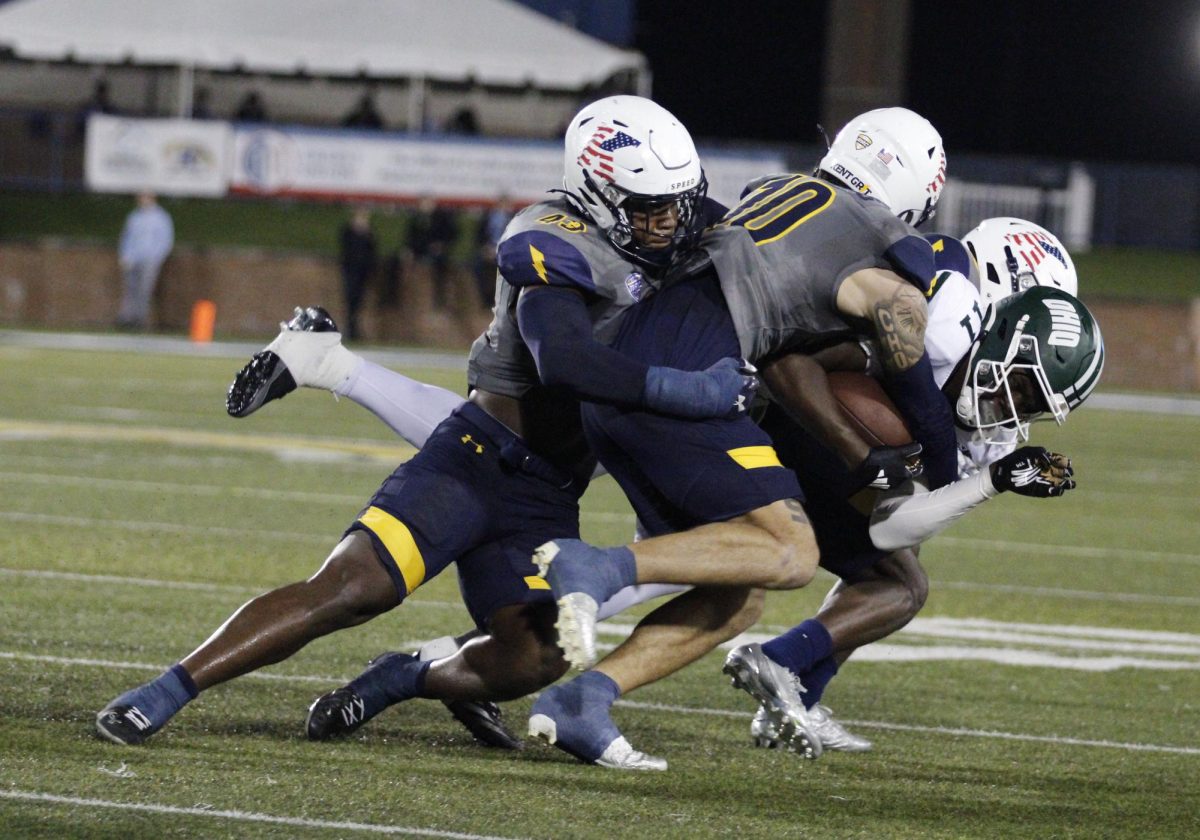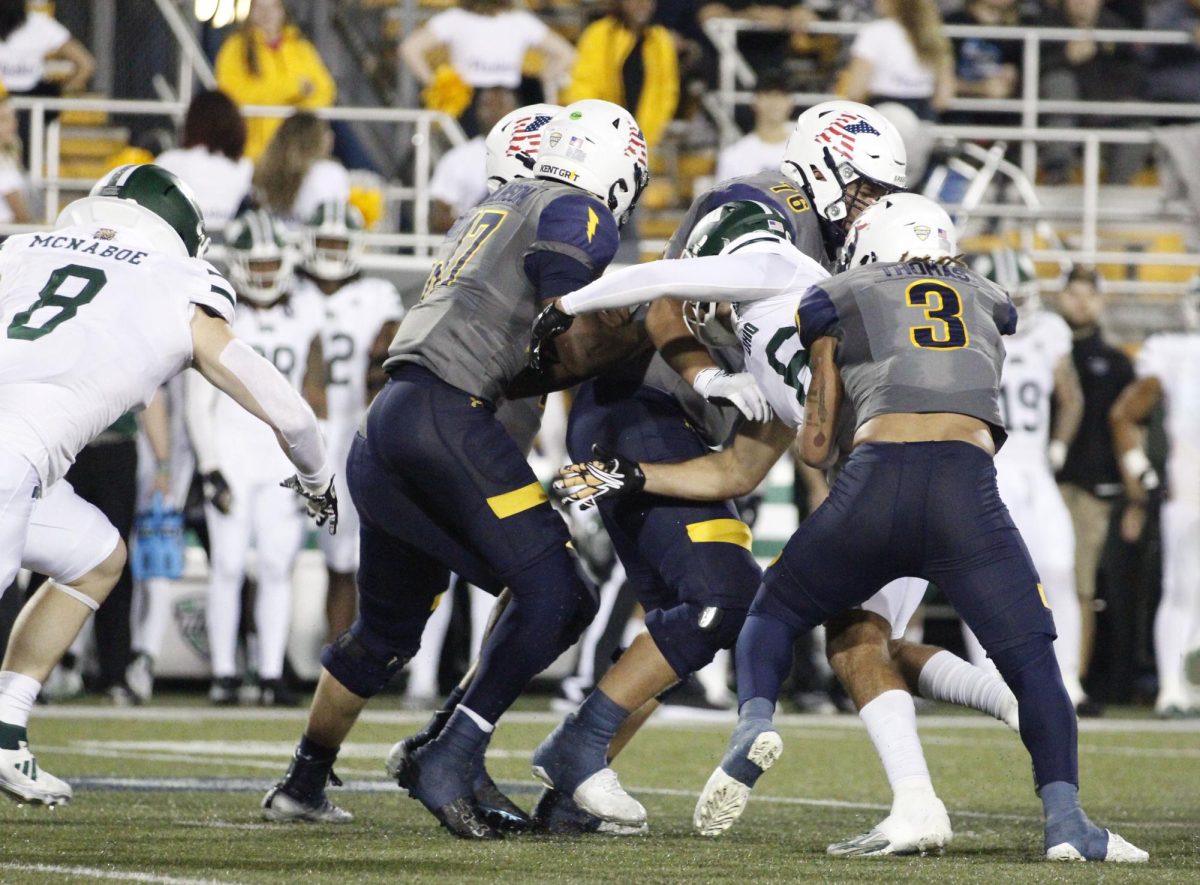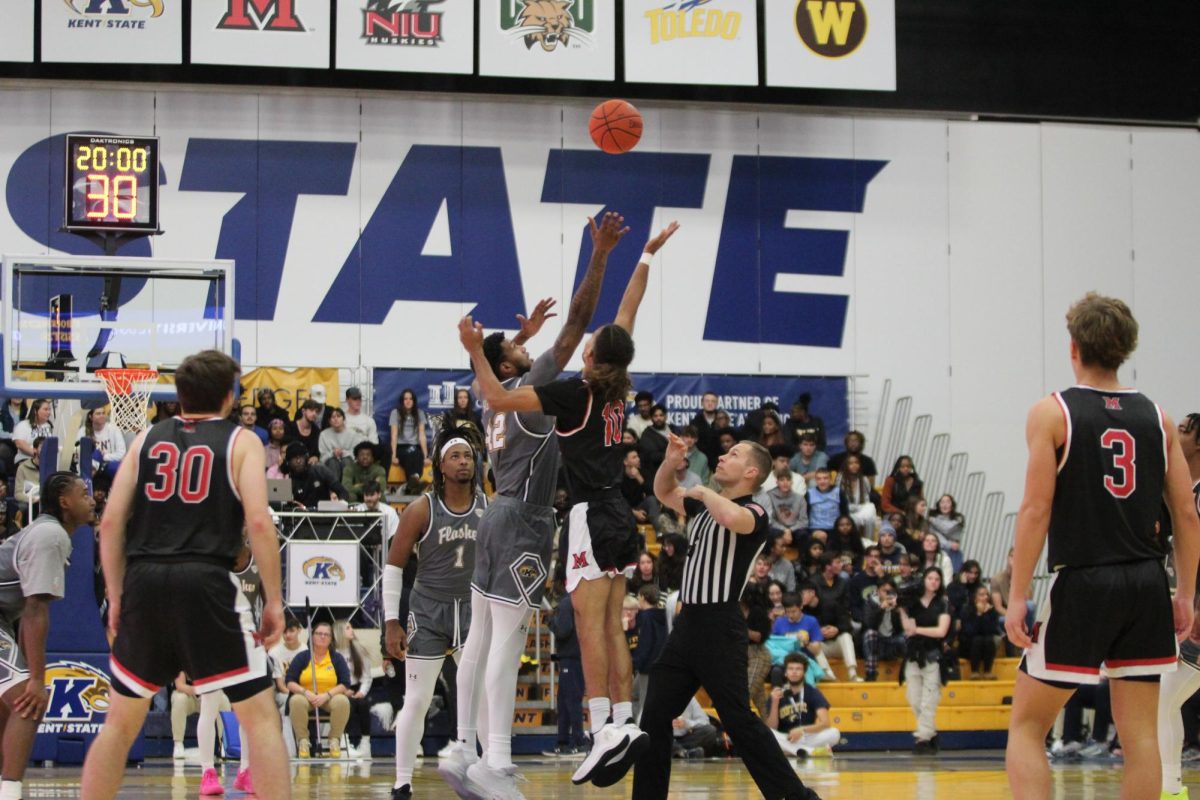Since 1997, the Mid-American Conference has featured an east division and a west division, with the two division champions facing off in the conference championship game.
Like many other conferences, the MAC is leaving behind the division system, and they will be using a pod system.
The MAC has not lost or gained any teams since the beginning of the 2016 season, so conference realignment is not a reason they are moving on to the pod system.
MAC commissioner Jon Steinbrecher said, “The new model will protect rivalries while facilitating a more even rotation of teams through each institution’s schedule.”
The MAC is a 12-team conference where each team plays 12 regular season games, eight of which are conference matchups.
With six teams in each division, five of the eight conference games for Kent State would be against the other five MAC East schools.
This leaves only three conference games left to play cross-division games against MAC West opponents.
Because they are not in the same division as Toledo, Kent State has only played the Rockets eight times since the inception of divisions in the MAC.
The Temple Owls were a member of the MAC East from 2006-2011, so they played the Golden Flashes all six years, adding up to just two times fewer than the number of times Kent played Toledo in a span of 27 years.
In the new pod system, we will see more frequent matchups of former MAC East and MAC West teams.
So, what does this new pod system look like?
There will be four pods, each with three teams. Just as divisions were, the teams in each pod will, for the most part, be geographically close to each other.
The three teams in each pod will all play each other every year, and each team will play at least one team from every other pod each season.
At the end of the season, whichever two teams have the best conference record will compete in the conference championship.
Kent State’s annual opponents will be Buffalo and Akron.
The advantage is that in the pod system, Kent State will play each team at least twice every three years, which is more than once every two years, but there is still another issue with the pod system.
There is a possibility there is a team that goes 8-0 in conference and two teams that go 7-1, but those two 7-1 teams didn’t play each other, so there’s no head-to-head tiebreaker.
Now, the two teams are put in a spot where secondary and tertiary tiebreakers may have to be used to determine who gets a spot in the MAC Championship and who does not.
This was never a problem with divisions, as there was always a head-to-head matchup that could be used as a tiebreaker if necessary.
It is a safe bet to say the MAC felt this was a good time to move to pods because of all of the conference realignment happening in college football and most conferences moving on from divisions.
Though the decision by the MAC did not seem to be out of necessity, we must credit the conference as they are just one of two conferences that have not added teams just for the sake of money.
Even before conference realignment in the last few years, the MAC was the most geographically tight conference.
They have held strong since and show no signs of folding.
Demetri Manousos is a reporter. Contact him at [email protected].








